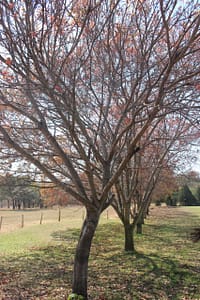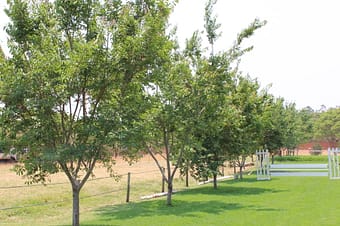

Botanical Name: Bridelia micrantha (Hochst.) Baillon
Common Name: Mushiwe
Plant Family: Euphorbiaceae
Origin: Africa
References: Coates Palgrave p.490, Storrs 1 p.235-236, van Wyk 2 p.72, Venter p.136, S.A. No. – Zimb. No. 475
Description: A small to medium sized semi-deciduous tree, usually found in riverine areas and forest remnants, but may also occur in open woodland. It has a pale, grey-brown, flaky, rough bark and upright growth form. The leaves are 5-18cm long dark glossy green above and paler below. The flowers are inconspicuous, small pale yellow clusters among the leaves. The fruit is a small (8mm) roundish, black when mature and sweet tasting.
Features of Particular Interest: A fast growing, shady tree. Autumn leaves are yellow, red and purple and the new young leaves are coppery red.
Height and Spread: 7-15m high, 5-8m spread.
Periods of Interest:
Leaf: August to June.
Flowering: October to January.
Fruiting: January to April.
Cultivation
Soil and Moisture: Prefers heavier, fertile soils, but is tolerant of most soil types. Plant seedlings out in full sun with regular watering.
Aspect: A tree of mixed woodland that prefers open sun.
Hardiness: Tolerant to frost but requires moisture.
Maintenance and Pruning: No special requirements.
Propagation: Place fresh seed under a thin covering of planting medium and water regularly.
Problems and Drawbacks: Germination is relatively easy, growth fast and the plant frost-hardy once established.
Use and Associated Planting: The timber has been successfully used in furniture making. Avenue or specimen. The fruits draw a large variety of birds and small mammals, including bush babies. It makes an excellent shade tree forming a crown after only a few years. The tree can be used as a background plant in the garden adding a splash of color in the spring and autumn.
